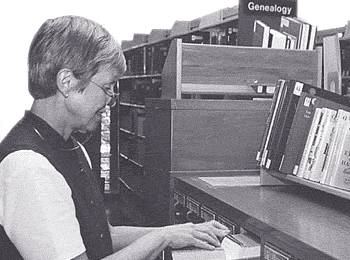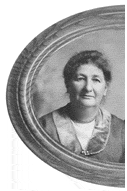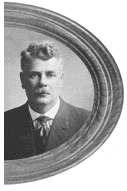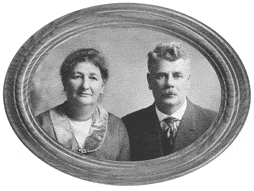|
If you’ve ever wondered about your ancestry, you’re
interested in genealogy. And if you’ve tried tracing part
of your family history, you’re a budding genealogist.
“Genealogy is about connecting people,” says
Jane Gardner Aprill, a professional genealogist in New
Orleans. “You can do it by going back—for example,
starting with yourself and then your parents, their parents,
and so on. Another way is to pick a person, perhaps a famous
person, and then come forward in time, listing children,
grandchildren, great-grandchildren.” Either way, the
number of people involved grows rapidly.
But the speed with which family connections grow
does not translate into fast research. In fact, researching
genealogy is time consuming because everything must be
independently verified. “If you want to add a branch to
your family tree,” Jane points out, “you have to make
sure it’s the right branch.”
Like most genealogists, Jane begins a project by basing
her research on a fact usually supplied by the client who
hires her for the genealogical research. A fact is simple—your
grandmother was born, for example—but provides the
springboard for researching questions surrounding it—such
as where and when your grandmother was born.

Jane then devises a plan for researching that fact,
studies available sources, and reaches a conclusion. To
complete a project, she summarizes her findings in a report
to the client. Planning, source examining, and report
writing each consume about one-third of the time required
for a project.
In devising a research plan, Jane considers the available
resources, including both home and published sources. She
first inquires after home sources, such as personal letters,
photographs, and information relatives may have. Then, to
expand on the home-source information, she turns to
published sources such as books, bibliographies, and
collections of records. “The best source is the one that
gets you closest to the event or fact recorded,” says
Jane. The plan reflects her decisions about which sources
will be most useful to her research.
Retrieving these sources first requires tracking them
down. Home sources may be available locally or might be
spread among many family members throughout the country.
Published sources are in a number of places, including
public and repository libraries, State archives, and city,
county, or State offices of public record.
Sometimes, Jane gets the information she needs via phone,
fax, or mail. But she usually visits the source site herself
to review, evaluate, and verify each piece of information.
That’s a lot of trips to a library or courthouse. It also
means spending many hours there, because most sources are
reference materials that cannot be checked out.
Jane
makes notes and copies of the information she finds,
organizing her research at the end of the day. Documentation—noting
where information came from, such as volume and page numbers—is
the key to good research. When satisfied she has all
available sources for a project, Jane begins analyzing the
results of her search to reach a conclusion. Each project
concludes with a report, which states what was requested and
what was and was not found. key to good research. When satisfied she has all
available sources for a project, Jane begins analyzing the
results of her search to reach a conclusion. Each project
concludes with a report, which states what was requested and
what was and was not found.
Completing a project is very satisfying, Jane says, but
by far the most enjoyable part of her work is the rush of
adrenaline that comes from finding an item she’s looking
for. Especially fulfilling is uncovering a fact buried in
volumes of, say, unalphabetized, handwritten records. “Whether
I’m doing research for myself or for someone else,” she
says, “the reaction is the same: ‘Ah, there it is!’”
Gaining satisfaction from researching for others is a
benefit Jane never expected. That’s because she never
expected to do genealogical research for anyone other than
herself. Like many genealogists, Jane’s interest in the
field began with a curiosity about her own roots. As a
child, she enjoyed figuring out her relationship to maternal
aunts, uncles, and cousins who lived nearby; members of her
father’s family, who lived farther away, came to life in
photographs she grouped and labeled.
Jane continued tracing her ancestry sporadically as she
grew up. The familial fascination was always present, even
into adulthood: driving through a town might include a stop
to inquire about her father’s family.
Finally, in the late 1980’s, Jane became a serious
student of genealogy. She took courses through the Institute
of Genealogy and Historical Research at Samford University
in Birmingham, Alabama, one of a handful of genealogy
institutes offering classes in the United States.
After completing genealogy coursework, Jane began attending
conferences, subscribing to journals, reading books, and
networking with other genealogists. Through the Board for
Certification of Genealogists, she earned the designation of
Certified Genealogical Record Specialist. She is a member of
the Association of Professional Genealogists, serving as its
secretary and Louisiana Chapter liaison. To educate the
public about genealogy—an Association objective—Jane
sometimes gives talks on a variety of topics. coursework, Jane began attending
conferences, subscribing to journals, reading books, and
networking with other genealogists. Through the Board for
Certification of Genealogists, she earned the designation of
Certified Genealogical Record Specialist. She is a member of
the Association of Professional Genealogists, serving as its
secretary and Louisiana Chapter liaison. To educate the
public about genealogy—an Association objective—Jane
sometimes gives talks on a variety of topics.
As busy as genealogy keeps her, however, Jane works
at it only part time. And according to a 1997 Board survey,
she’s in the majority. The survey found that of certified
associates, 57 percent work part time and 34 percent work
full time; nearly all are self-employed. Another 9 percent
are hobbyists.
Counting genealogists is more difficult. The Board
estimates that there are currently about 320 certified
genealogists. But because certification is voluntary, the
number of genealogists is much higher. There are 1,100
Association members throughout the country, with another 100
members outside the United States. The Federation of
Genealogical Societies has about 550 member societies
representing 500,000 people, but many societies do not
belong to the Federation. A still greater number of
genealogists are not members of any such societies. How many
are full or part time or hobbyists also is unknown, as is
the number who collect fees for their services.
Genealogists who charge for their work usually do so by
the hour; they also bill for out-of-pocket expenses such as
travel and photocopies. According to the Board survey,
hourly fees for certified associates averaged about $25,
with noncertified survey respondents charging $23. As with
any occupation, fees may be higher or lower depending on a
number of factors, including experience, credentials,
specialty, and geographic area.
A project’s total cost is determined by the number of
hours it takes a genealogist to complete it. That depends on
the project, but Jane says it ranges from 1 hour for a
marriage record search to 1,000 hours for a 3-generation
family history. Such estimates can startle new clients, who
usually have little idea of the time required.

©Rights reserved
Sometimes, Jane and her clients agree on a maximum
number of hours she should work on a project. Jane lets
clients decide whether they want her to continue when she
reaches the threshold. Usually, they say she should. “Most
people have no concept of how long it takes,” says Jane.
“They’ll tell you, ‘I want everything all the way back
to Adam.’ You need to be patient and willing to explain
again and again why requests like that just aren’t
practical.”
In addition to patience, genealogists need
other qualities and skills to do their work well. They
should be inquisitive, have good organizational skills, and
know how to use a library. Math, accounting, and
communication ability also are a must for figuring out
dates, tallying hours and expenses, and explaining research
results clearly. Knowing the history of a region is often
essential to research. Depending on genealogists’
specialty areas or geographic location, they may need other
skills; Jane notes, for example, that researchers in
Louisiana must know some French and Spanish to decipher old
records.
Basic computer knowledge also is important. Some
libraries have created databases and digitized their
records, making select searches faster and the information
more accessible. But Jane says some clients have
misconceptions about the power of technology. Electronic
research is another tool for—not a replacement for
traditional methods of—finding information. “An Internet
search may give you facts,” she says, “but it usually
doesn’t tell you where those facts came from.”
Identifying and documenting facts is the root of
genealogy. For Jane and genealogists like her, it’s a
thrilling challenge—despite the slow pace of the work.
Says Jane, “As an old woman once said, ‘Genealogy is
like water dripping on a rock: it’ll make a hole, but it’ll
take a long time.’”
Photo of Jane Gardner Aprill courtesy of
Carter Stevens
 Top
Top
|



